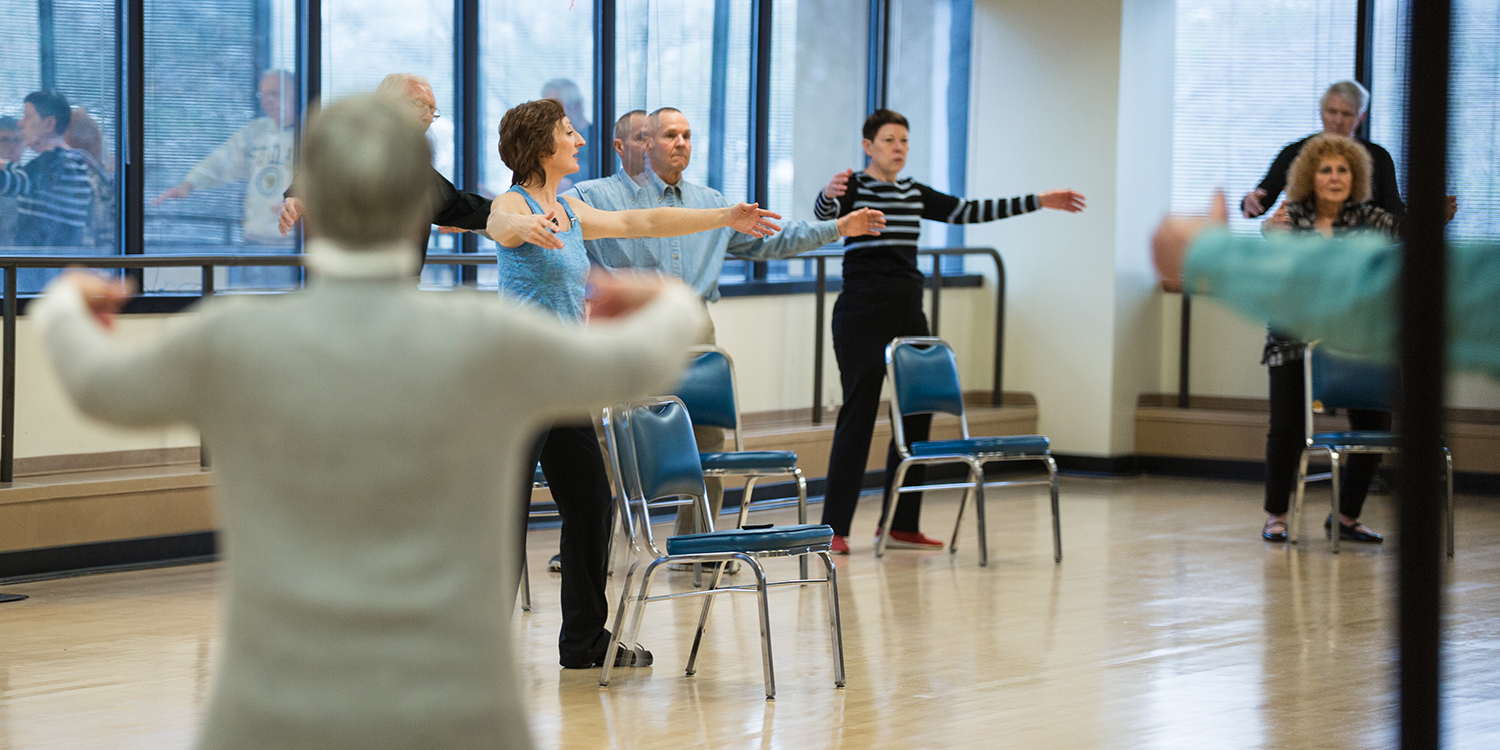 About 30 to 40 people with Parkinson’s disease are expressing themselves through movement in a class taught by UT Dallas instructor Misty Owens.
About 30 to 40 people with Parkinson’s disease are expressing themselves through movement in a class taught by UT Dallas instructor Misty Owens.
Dancing is considerably more than it seems. The movements and motions are obvious, but UT Dallas’ Misty Owens, a senior lecturer in dance, said it’s about the physical and mental process of thought, emotions and inspiration that create the expression of dance.
In addition to teaching her classes at UTD, Owens utilizes that philosophy as she leads dance classes for individuals who have been diagnosed with Parkinson’s disease — a neurodegenerative disorder that affects movement.
She tries to surprise and challenge the class with choreography meant to stimulate the mind and body, while nurturing and encouraging them through the shared experience of dance.
“In dance class, participants are liberated from their disease,” Owens said. “They are able to explore all of the possibilities of movement and expression — because expression is so valuable for just bringing you back to who you are, taking away the mask of the disease.”
Owens is one of three founding teachers of Dance for PD, launched as a nonprofit collaboration between the Mark Morris Dance Group and the Brooklyn Parkinson Group in New York. The program has since expanded to 250 communities in 24 countries.
A Dallas group of 35 to 40 people meets twice a week in a spacious dance studio at Texas Health Presbyterian Dallas. The Dance for PD class includes modern, ballet, jazz, tap and world dance. The majority of the time is devoted to movements that are done while seated, then standing with support, then walking and dancing without support.
One of the class participants, Bobbi Myers, said she began taking ballet lessons when she was 7 years old and continued dancing, eventually joining the Sacramento Ballet Company in California. She said that while she experiences some frustration that her movements have been curtailed, the class feeds her soul.
“It’s more than just a dance class; it’s a community support system. We care about each other, and we try to support each other as we travel through this journey with Parkinson’s and other movement disorders,” Myers said.
While each participant’s experience is different, many say the disease’s progression has been slowed or, in some cases, they have experienced smoother movements since they joined the dance class.
“I encourage each person, embracing each step that they take, as they enhance their talents through dance vocabulary and movement combinations resulting in greater self-confidence,” Owens said. “This self-confidence permeates the entire person, affecting all of their activities, creating more ambition, drive and self-assurance.”